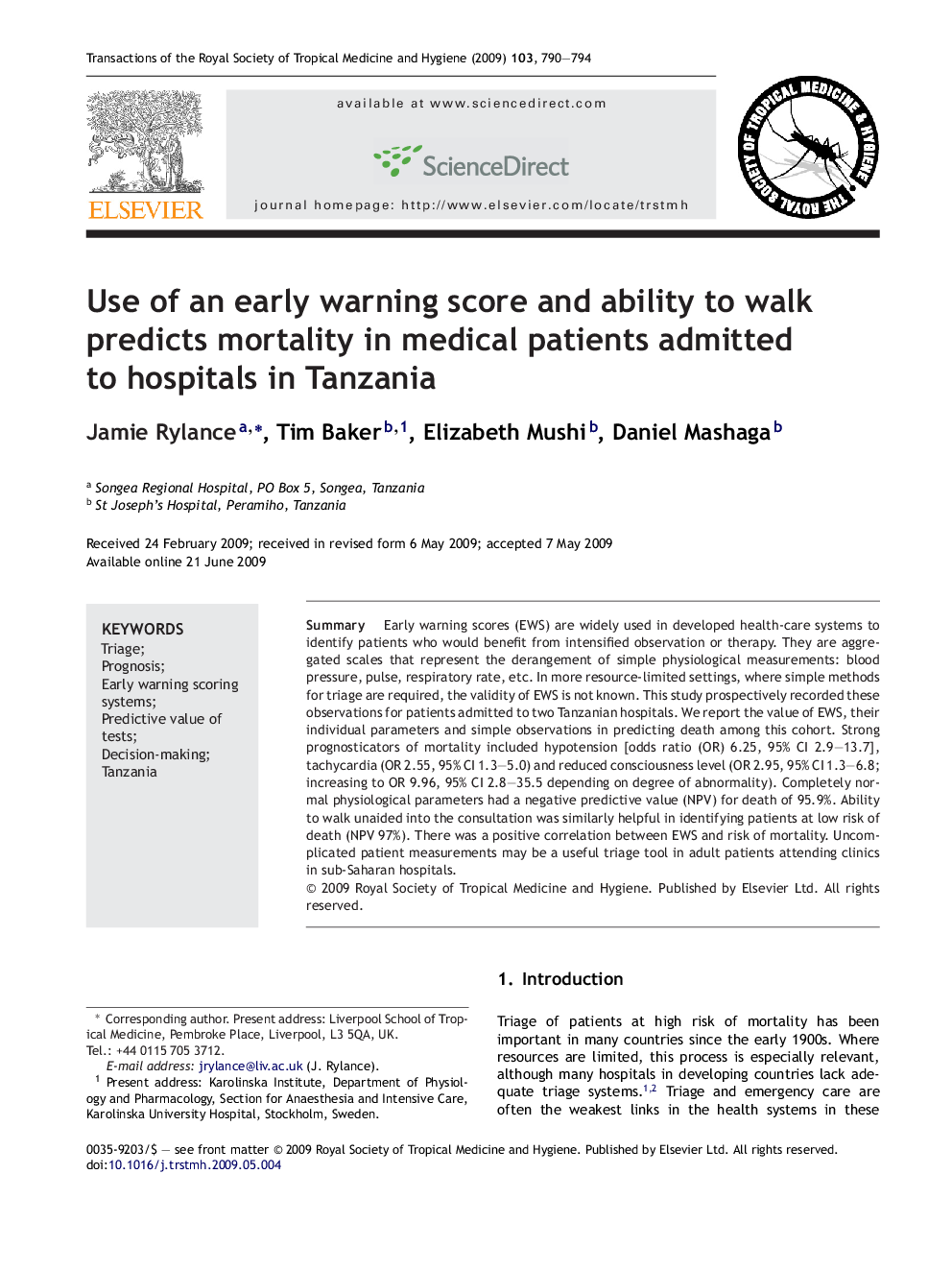| کد مقاله | کد نشریه | سال انتشار | مقاله انگلیسی | نسخه تمام متن |
|---|---|---|---|---|
| 3420930 | 1594005 | 2009 | 5 صفحه PDF | دانلود رایگان |

SummaryEarly warning scores (EWS) are widely used in developed health-care systems to identify patients who would benefit from intensified observation or therapy. They are aggregated scales that represent the derangement of simple physiological measurements: blood pressure, pulse, respiratory rate, etc. In more resource-limited settings, where simple methods for triage are required, the validity of EWS is not known. This study prospectively recorded these observations for patients admitted to two Tanzanian hospitals. We report the value of EWS, their individual parameters and simple observations in predicting death among this cohort. Strong prognosticators of mortality included hypotension [odds ratio (OR) 6.25, 95% CI 2.9–13.7], tachycardia (OR 2.55, 95% CI 1.3–5.0) and reduced consciousness level (OR 2.95, 95% CI 1.3–6.8; increasing to OR 9.96, 95% CI 2.8–35.5 depending on degree of abnormality). Completely normal physiological parameters had a negative predictive value (NPV) for death of 95.9%. Ability to walk unaided into the consultation was similarly helpful in identifying patients at low risk of death (NPV 97%). There was a positive correlation between EWS and risk of mortality. Uncomplicated patient measurements may be a useful triage tool in adult patients attending clinics in sub-Saharan hospitals.
Journal: Transactions of the Royal Society of Tropical Medicine and Hygiene - Volume 103, Issue 8, August 2009, Pages 790–794